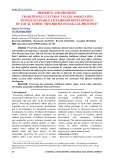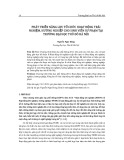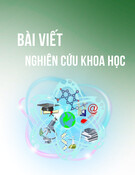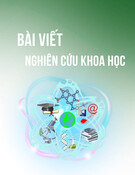
http://www.iaeme.com/IJMET/index.asp 1974 editor@iaeme.com
International Journal of Mechanical Engineering and Technology (IJMET)
Volume 10, Issue 03, March 2019, pp. 1974–1981, Article ID: IJMET_10_03_199
Available online at http://www.iaeme.com/ijmet/issues.asp?JType=IJMET&VType=10&IType=3
ISSN Print: 0976-6340 and ISSN Online: 0976-6359
© IAEME Publication Scopus Indexed
THE BIG DATA USABILITY’S TRENDS IN
EDUCATION: A SYSTEMATIC LITERATURE
REVIEW
Devyano Luhukay, Meyliana, Achmad Nizar Hidayanto, Harjanto Prabowo
Information Systems Department, School of Information System,
Bina Nusantara University, Jakarta, Indonesia 11480
ABSTRACT
Technology innovation nowadays makes life easier than previous decades. In
Education sector, technology has been used to enhance the learning experience such as
Learning Management Systems, e-Learning, etc. Another innovation in database is Big
Data. This paper uses Systematic Literature Review (SLR) to find the trends of usability
of Big Data in education sector. The research found that there are mostly 2 types of
trends of Big Data usability in Education they are Conceptual Trends and Research
Trends. Conceptual Trends affects Functional Area such as: Curriculum; Education
Management and Learning Activities. Research Trends affects: Learning Activities and
Curriculum.
Key words: Big Data, Education, Learning Analytics, Big Data Trends
Cite this Article: Devyano Luhukay, Meyliana, Achmad Nizar Hidayanto,
Harjanto Prabowo, The Big Data Usability’s Trends in Education: A Systematic
Literature Review, International Journal of Mechanical Engineering and Technology
10(3), 2019, pp. 1974–1981.
http://www.iaeme.com/IJMET/issues.asp?JType=IJMET&VType=10&IType=3
1. INTRODUCTION
Technology innovation nowadays makes life easier than previous decades. All technologies
that applied in many fields will improve quality in many ways. One of the countries in Asia,
Korea as a country with the highest number of internet users in the world according to [1], in
the past 10 years their life relies on digital products in much areas which directly increase the
amount of digital data exponentially. The development of technology could be observed from
several kinds of software used in various fields such as software or an application for supporting
education. In China, specifically in the education sector there are so much learning management
systems that has been developed which lead to the very large data on learner and the process of
learning [2]. The quantity of the information and data flow through the application required a
big medium storage. According to [3], conventional medium storage, “Traditional Databases:
Traditional data sources are the existing relational databases, data warehouses, data marts, or
any other information system producing structured data. A conventional medium storage where
data that is stored only in the form of text and numbers are not able to receive enough to storing






























